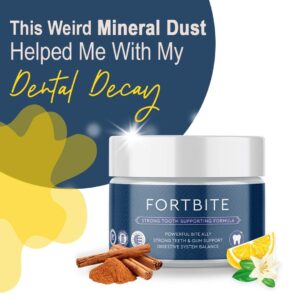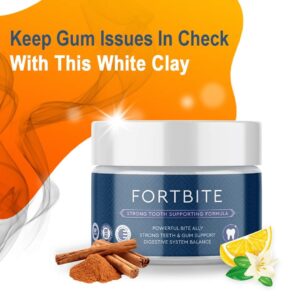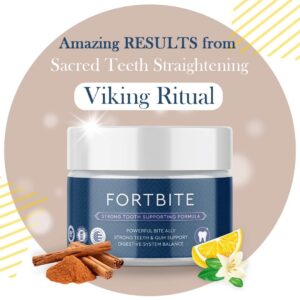How can I whiten my teeth fast at home?
There are several methods to whiten your teeth at home, some of which can yield relatively quick results. However, it’s important to use these methods carefully to avoid damaging your teeth or gums. Here are some effective home whitening methods:
1. Over-the-Counter Whitening Products:
- Whitening Toothpaste: Use a toothpaste containing hydrogen peroxide or carbamide peroxide. These ingredients help remove surface stains and lighten teeth. Whitening toothpaste can show results in a few days to a couple of weeks.
- Whitening Strips: These are thin, flexible plastic strips coated with a whitening gel that contains peroxide. Apply the strips to your teeth as directed, usually for about 30 minutes per day. You might see noticeable results within a week or two.
- Whitening Gels and Trays: These kits include a whitening gel containing peroxide and a mouth tray. Fill the tray with the gel and wear it for the recommended time each day. Results can appear within a few days to a few weeks.
2. Natural Remedies:
- Baking Soda and Hydrogen Peroxide: Mix a small amount of baking soda with hydrogen peroxide to form a paste. Brush your teeth with this paste a few times a week. Baking soda is mildly abrasive and can help remove surface stains, while hydrogen peroxide is a bleaching agent.
- Apple Cider Vinegar: Dilute apple cider vinegar with water and use it as a mouthwash. Rinse for about one minute before brushing your teeth. Do this only occasionally, as apple cider vinegar is acidic and can erode enamel if used too frequently.
- Activated Charcoal: Brush your teeth with activated charcoal powder. Activated charcoal is highly absorbent and can help remove stains from your teeth. Be gentle when brushing to avoid damaging your enamel.
3. Dietary Changes:
- Avoid Staining Foods and Drinks: Reduce consumption of coffee, tea, red wine, soda, and dark-colored fruits. If you do consume these, rinse your mouth with water afterward.
- Eat Crunchy Fruits and Vegetables: Foods like apples, carrots, and celery can help scrub away plaque and surface stains as you chew.
4. Good Oral Hygiene:
- Brush and Floss Regularly: Brush at least twice a day and floss daily to remove plaque and prevent stains.
- Rinse with Water After Eating: Rinsing your mouth with water after meals can help wash away food particles and reduce staining.

Important Considerations:
- Follow Instructions: Always follow the instructions provided with any whitening product to avoid overuse, which can lead to tooth sensitivity or gum irritation.
- Consult Your Dentist: If you have concerns about whitening your teeth or if you have dental restorations (such as crowns or fillings), consult your dentist before starting any whitening regimen. Some products may not be suitable for everyone.
Summary:
While there are several methods to whiten your teeth at home, it’s important to use them correctly and to be aware of potential side effects like tooth sensitivity. Over-the-counter whitening products, natural remedies, and good oral hygiene can help you achieve a brighter smile relatively quickly. For the best and safest results, consider consulting with your dentist.
What causes yellowness on your teeth?
Several factors can cause yellowness on your teeth, ranging from lifestyle habits to medical conditions. Here are some common causes:
Lifestyle and Dietary Factors
Poor Oral Hygiene
- Inadequate brushing and flossing can lead to plaque buildup, which can harden into tartar, causing teeth to appear yellow.
Dietary Choices
- Consuming foods and drinks that stain the teeth, such as coffee, tea, red wine, cola, and certain fruits and vegetables (like berries and beets), can lead to yellowing.
Smoking and Tobacco Use
- Nicotine and tar in tobacco products can stain teeth and cause them to turn yellow or brown.
Medical and Biological Factors
Aging
- As you age, the enamel on your teeth can wear down, revealing the yellowish dentin layer underneath.
Genetics
- Some people naturally have thinner or more translucent enamel, making the yellow dentin more visible.
Medications
- Certain medications, such as tetracycline antibiotics taken during childhood, antihistamines, antipsychotic drugs, and antihypertensive medications, can cause teeth discoloration.
Fluorosis
- Overexposure to fluoride during the early years of tooth development can cause fluorosis, leading to yellow or brownish stains on teeth.
Environmental Factors
High Levels of Fluoride
- High fluoride levels in drinking water or excessive use of fluoride-containing products can contribute to tooth discoloration.
Dental Trauma
- An injury to a tooth can damage the enamel or pulp, leading to discoloration.
Health Conditions
Bruxism (Teeth Grinding)
- Chronic grinding or clenching can wear down the enamel, exposing the yellow dentin underneath.
Preventive Measures and Remedies
Good Oral Hygiene
- Brush twice a day with fluoride toothpaste and floss daily to remove plaque and prevent tartar buildup.
Dietary Adjustments
- Limit consumption of staining foods and drinks. Rinse your mouth with water after consuming them.
Quit Smoking
- Avoid tobacco products to prevent staining and improve overall oral health.
Regular Dental Visits
- Regular professional cleanings can remove surface stains and tartar.
Whitening Treatments
- Over-the-counter whitening toothpaste and strips, professional in-office bleaching, and at-home whitening kits prescribed by a dentist can help lighten tooth discoloration.
Avoid Excessive Fluoride
- Use fluoride products as recommended and avoid overconsumption of fluoride to prevent fluorosis.

Conclusion
Yellowing of teeth can result from various factors, including lifestyle habits, dietary choices, aging, genetics, medications, and health conditions. Maintaining good oral hygiene, making dietary adjustments, avoiding tobacco, and seeking professional dental care are essential steps in preventing and addressing tooth discoloration. If you’re concerned about the color of your teeth, consult with a dentist for personalized advice and treatment options.
How to remove yellowness from teeth?
Removing yellowness from teeth can often be achieved through a combination of good oral hygiene practices, over-the-counter whitening products, natural remedies, and dietary changes. Here are some effective methods:
1. Good Oral Hygiene Practices:
- Brushing: Brush your teeth at least twice a day with fluoride toothpaste. Use a toothbrush with soft bristles and replace it every three to four months.
- Flossing: Floss daily to remove plaque and food particles between your teeth that brushing alone can’t reach.
- Mouthwash: Use an antiseptic or whitening mouthwash to kill bacteria and help maintain oral hygiene.
2. Over-the-Counter Whitening Products:
- Whitening Toothpaste: These toothpastes contain mild abrasives, hydrogen peroxide, or carbamide peroxide that help remove surface stains and lighten teeth.
- Whitening Strips: Apply these strips, which are coated with a whitening gel, to your teeth as directed (usually for 30 minutes a day). Results can be seen in about a week.
- Whitening Gels and Trays: These kits come with a whitening gel and trays. The gel usually contains peroxide and can be used to achieve noticeable results in a few days to weeks.
3. Professional Dental Treatments:
- Professional Cleaning: Regular dental cleanings can help remove surface stains and tartar buildup that contribute to yellowing.
- In-Office Whitening: Dentists offer professional teeth whitening treatments that use stronger whitening agents than over-the-counter products, providing faster and more dramatic results.
4. Natural Remedies:
- Baking Soda and Hydrogen Peroxide: Make a paste by mixing a small amount of baking soda with hydrogen peroxide. Brush with this paste a few times a week to remove surface stains.
- Oil Pulling: Swish a tablespoon of coconut oil or sesame oil in your mouth for 15-20 minutes. This traditional method can help remove bacteria and reduce plaque.
- Apple Cider Vinegar: Dilute with water and use as a mouthwash. Be cautious with frequent use, as it can erode enamel due to its acidity.
5. Dietary Changes:
- Avoid Staining Foods and Drinks: Limit consumption of coffee, tea, red wine, cola, and dark berries. If you do consume these, rinse your mouth with water afterward.
- Eat Crunchy Fruits and Vegetables: Apples, carrots, and celery can help scrub your teeth naturally and increase saliva production, which helps clean your teeth.
- Cheese and Dairy: Dairy products like cheese and yogurt can help strengthen your teeth and may also help reduce staining.
6. Lifestyle Changes:
- Quit Smoking: Tobacco can cause significant yellowing of teeth, so quitting smoking can help prevent further staining.
- Limit Alcohol: Some alcoholic beverages, especially red wine, can stain teeth. Reducing consumption can help maintain whiter teeth.
7. Hydration:
- Drink Water: Drinking plenty of water helps wash away food particles and bacteria, reducing the risk of stains and maintaining overall oral health.
Summary:
To remove yellowness from teeth, maintain good oral hygiene, use over-the-counter or professional whitening treatments, consider natural remedies, and make dietary and lifestyle changes. Regular dental check-ups and cleanings are also crucial for maintaining white and healthy teeth. If you have significant concerns about tooth discoloration, consult your dentist for personalized advice and treatment options.
How to whiten teeth with baking soda?
Whitening your teeth with baking soda can be an effective and inexpensive method. Baking soda (sodium bicarbonate) is mildly abrasive, which helps to remove surface stains from teeth and make them appear whiter. Here are some methods to use baking soda for teeth whitening:
Method 1: Baking Soda and Water
Mix the Paste:
- Combine 1 teaspoon of baking soda with a few drops of water to form a thick paste.
- You want the consistency to be like a toothpaste.
Brush Your Teeth:
- Dip your toothbrush into the baking soda paste.
- Brush your teeth gently for about 2 minutes, making sure to cover all areas.
- Be cautious not to scrub too hard to avoid damaging the enamel.
Rinse Thoroughly:
- Rinse your mouth and toothbrush with water to remove the baking soda residue.
Method 2: Baking Soda and Toothpaste
Prepare the Mixture:
- Squeeze a small amount of your regular toothpaste onto your toothbrush.
- Sprinkle a small pinch of baking soda on top of the toothpaste.
Brush Your Teeth:
- Brush as you normally would, for about 2 minutes.
- This method combines the cleaning power of toothpaste with the whitening effect of baking soda.
Rinse Thoroughly:
- Rinse your mouth and toothbrush with water.
Method 3: Baking Soda and Hydrogen Peroxide
Mix the Ingredients:
- Combine 1 teaspoon of baking soda with 1/2 teaspoon of hydrogen peroxide to form a paste.
- Hydrogen peroxide is a mild bleaching agent that can help to enhance the whitening effect.
Brush Your Teeth:
- Apply the mixture to your toothbrush and brush for about 2 minutes.
- Be gentle to avoid over-abrasion.
Rinse Thoroughly:
- Rinse your mouth and toothbrush with water.
Tips and Precautions
- Limit Use: Baking soda is abrasive and can wear down the enamel if used too frequently. Limit its use to 2-3 times per week.
- Gentle Brushing: Always brush gently to avoid damaging the enamel and gums.
- Hydrogen Peroxide Caution: If using hydrogen peroxide, ensure it is in a low concentration (3%) and do not use it too frequently, as it can irritate the gums and soft tissues.
- Consult Your Dentist: Before starting any whitening treatment, it is a good idea to consult with your dentist, especially if you have sensitive teeth, existing dental issues, or concerns about using baking soda.
- Avoid Swallowing: Do not swallow baking soda or hydrogen peroxide. Rinse thoroughly after use.
Conclusion
Baking soda can be an effective way to whiten teeth by removing surface stains. However, it should be used cautiously and not as a substitute for regular oral hygiene practices, such as brushing with fluoride toothpaste and regular dental check-ups. For significant or persistent discoloration, professional dental treatments might be necessary.

How long does baking soda take to whiten teeth?
The time it takes for baking soda to whiten teeth can vary based on several factors, including the extent of tooth discoloration, the frequency of use, and individual dental health. Generally, you might start noticing some improvement in the whiteness of your teeth after a few weeks of regular use.
General Timeline
Initial Results:
- Some people may notice slight improvements in the whiteness of their teeth after a week or two of using baking soda.
Noticeable Whitening:
- More noticeable whitening typically occurs after 3-6 weeks of consistent use, depending on how often you use the baking soda method and the severity of the stains on your teeth.
Factors Affecting Results
Frequency of Use:
- Using baking soda 2-3 times per week is recommended. Overuse can lead to enamel erosion and tooth sensitivity.
Type and Severity of Stains:
- Surface stains caused by coffee, tea, smoking, and certain foods may lighten more quickly than deeper, intrinsic stains.
Oral Hygiene Routine:
- Combining baking soda use with good oral hygiene practices (brushing twice daily with fluoride toothpaste, flossing, and regular dental check-ups) can enhance results.
Dietary Habits:
- Limiting the intake of staining foods and beverages can help maintain the whitening effect.
How to Use Baking Soda Safely for Whitening
Mixing with Water:
- Make a paste with 1 teaspoon of baking soda and a few drops of water.
- Brush gently for 2 minutes, then rinse thoroughly.
Combining with Toothpaste:
- Sprinkle a pinch of baking soda on your regular toothpaste.
- Brush for 2 minutes, then rinse thoroughly.
Using with Hydrogen Peroxide:
- Mix 1 teaspoon of baking soda with 1/2 teaspoon of hydrogen peroxide to form a paste.
- Brush gently for 2 minutes, then rinse thoroughly.
Precautions
- Avoid Overuse: Limit the use of baking soda to 2-3 times per week to prevent enamel erosion.
- Gentle Brushing: Brush gently to avoid damaging the enamel and gums.
- Consult Your Dentist: Before starting any whitening treatment, especially if you have sensitive teeth or dental concerns, consult your dentist.
Conclusion
Baking soda can help whiten teeth over time, with initial results possibly visible after a week or two and more noticeable changes after several weeks of consistent use. It is important to use baking soda safely and in moderation to avoid damaging your teeth and gums. For significant or persistent discoloration, professional dental treatments may be more effective.